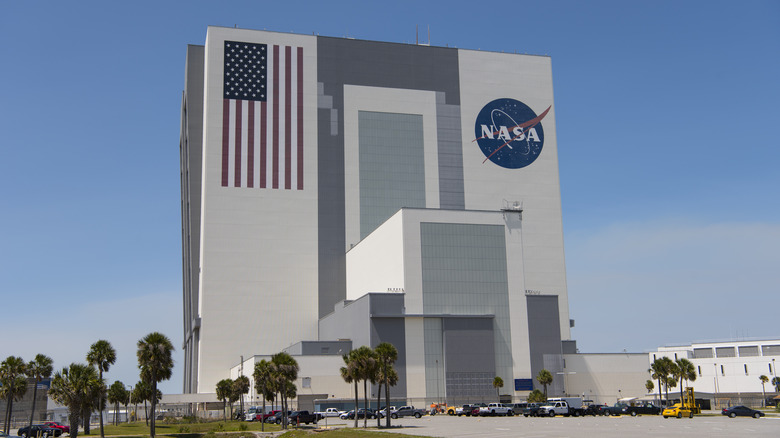Why So Many NASA Workers Are Leaving The Agency All At Once
At a press conference outside of Capitol Hill, Bill Nye took the stage. Famous for his "Bill Nye the Science Guy" television show, he is also the current leader of The Planetary Society, a non-profit that promotes space exploration. So proposed NASA budget cuts are a pretty big deal, and at the conference, Nye summed it up rather succinctly: "We're not talking about delays in scientific exploration, we're talking about the end of it."
These NASA budget cuts are part of Donald Trump's fiscal year 2026 proposal. The request is for NASA's funding to be cut by 47% and its workforce reduced by one-third, but despite this request not being signed into law by Congress yet, NASA is already making moves to comply with it. This includes the reduction of over 4,000 NASA workers by January 2026.
Though it's sad for anyone to lose their job, and the impact on the future of space exploration is left looking bleak, many are actually calling this move unconstitutional. The U.S. Senate Committee on Commerce, Science, and Transportation published a whistleblower report in September 2025 calling out NASA's actions: As they put it, compliance with budget cuts that haven't actually been made legal is unethical and unlawful. Now, the future of NASA is being called into question.
The details of NASA losing workers
According to the September 2025 report, the workers from NASA that have already left en masse have not necessarily done so voluntarily. The report states that workers have been threatened with losing their jobs if they don't silently comply with the not-yet-legal budget cuts NASA has already been internally implementing. This type of loss and these budget cuts could halt decades of scientific progress in space discovery.
The report also includes copies of many emails from NASA Acting Administrator Janet Petro and other leaders within the agency. In these emails, employees are told that NASA must make choices based on the funding it expects to receive instead of waiting on Congress to sign the funding into law. They highlight programs being offered to incentivize employees to leave NASA, including the Deferred Resignation Program, the Voluntarily Early Retirement Authority, and the Voluntary Separation Incentive Payment. An email sent in June 2025 warned that these programs would only be open through July 2025 and would not open again.
Interestingly enough, the report also contains more internal NASA emails from senior leadership meetings. One that talks about reducing the workforce by another 534 employees also mentions what to do if discretionary funds, or extra money, is found. The decision? Those funds are to be impounded in order for NASA to better meet the proposed budget reduction.
How this will impact the future of NASA
There is a great deal of concern on how the loss of thousands of NASA workers without replacements will impact both current and future NASA missions. At least 41 missions are at risk of being cancelled. The Mars Sample Return mission, which is critical to the future of Mars exploration (and maybe even seeing if the secret to life on Mars is cosmic rays), could be cancelled. Other missions that could be cancelled include an orbital observatory called the Nancy Grace Roman Space Telescope, the DAVINCI Venus exploration mission, the New Horizons mission to explore Pluto, and more.
The chief of policy at The Planetary Society, Casey Dreier, said to Space.com, "The operating missions cancellations alone represent over $12 billion of invested taxpayer value — and once they're gone, they're gone. It would take years and many millions more to replace them ... This is the extinction-level event we were warning people about."
There is also the concern about how these cuts impact safety. This would be the lowest budget NASA has ever had since 1961, according to the whistleblower report. The report states that employees feel that they can't voice safety concerns without losing their jobs. It highlights one case where, due to staff reduction, only two employees had to monitor an extremely dangerous project on a 24/7 schedule. It states that some employees within NASA feel that it is only a matter of time before an astronaut is killed due to weakened internal safety infrastructure.


